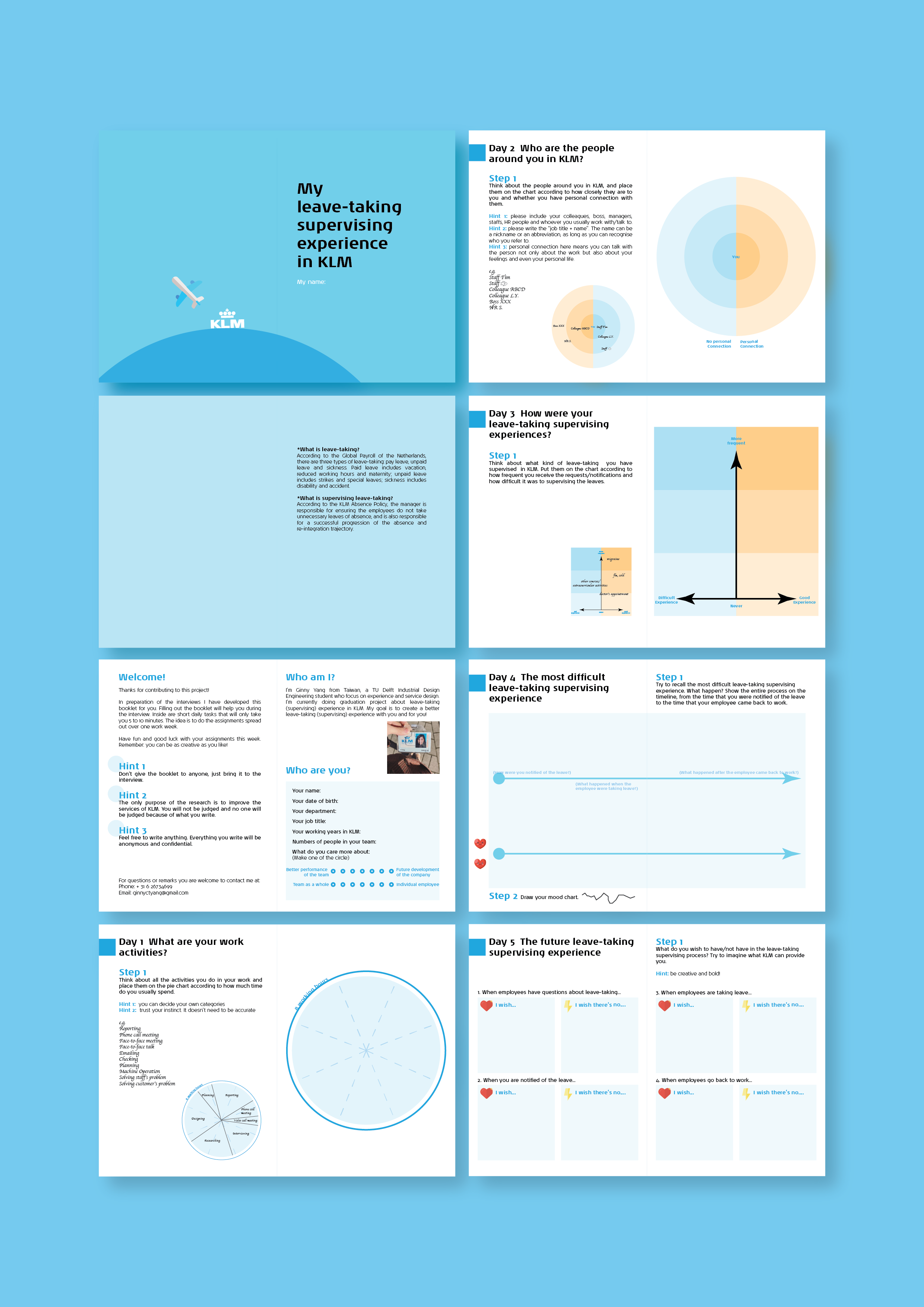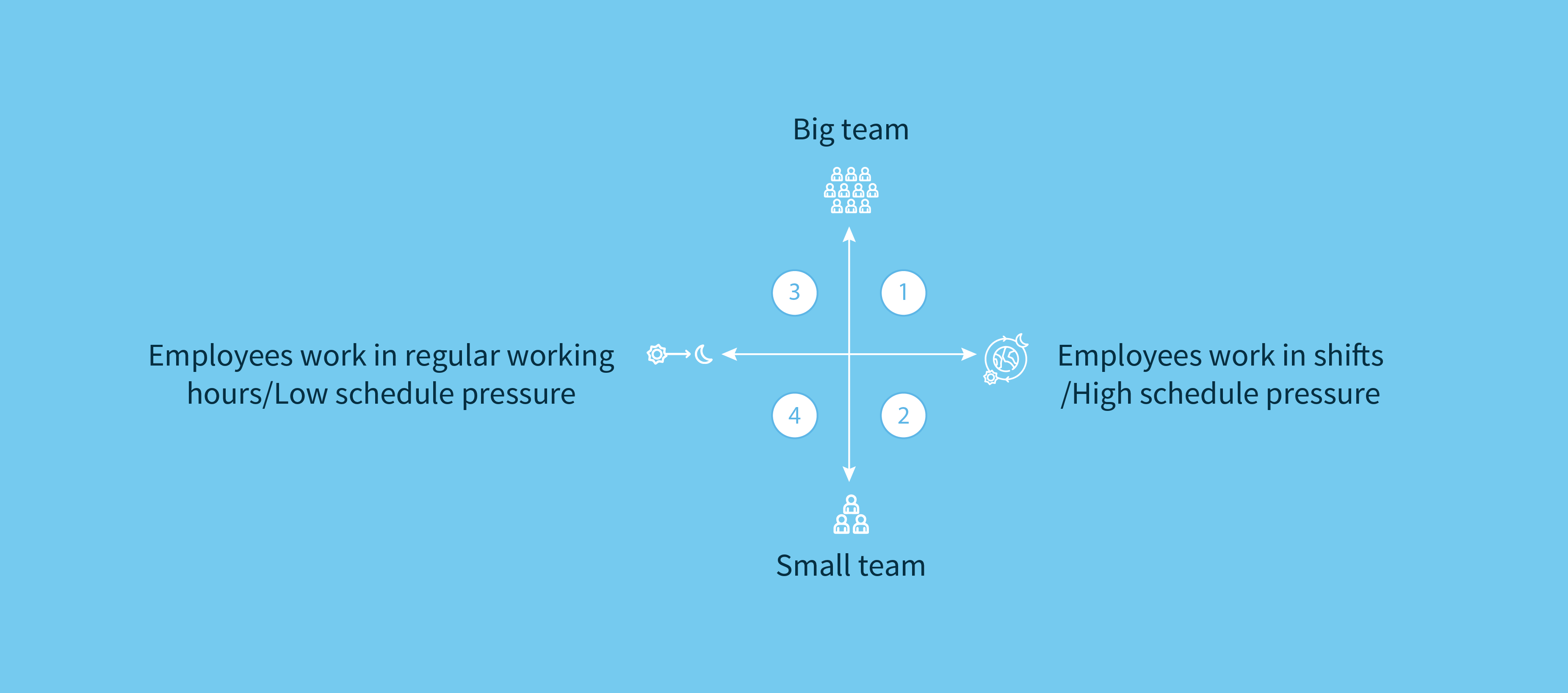Research leave-taking experience through context-mapping
This article will introduce the first highlight of the project: a user research done by context-mapping approach. The goal of the user research is to understand leave-taking experience from employees’ side and to understand leave-taking supervising experience from managers’ side. The result of research was to find out the four target groups of both leave-taking and leave-taking supervising experience.
| Work Type: | Individual Work |
|---|---|
| Client: | KLM Royal Dutch Airlines |
| Publish Date: | August 2019 |
| Subject: | Leave-taking Experience User Research |
| Approach: | Context-mapping |
Preface
According to the Global Payroll of the Netherlands, there are three types of leave-taking: pay leave, unpaid leave and sickness. Paid leave includes vacation, reduced working hours and maternity leave; unpaid leave includes strikes and special leave; sickness includes disability and accident. While the categories are clear in the Dutch regulations; not all the cases can be easily classified and processed in real situations. Occasionally, the situations are complicated, and it could be difficult for employees and their managers to decide what to do and how to proceed the procedure with procedures with no ambiguity. Having observed many difficult cases, KLM HR want to improve leave-taking experience for the entire company. And for the user research, the goal is to understand the problems employees and managers have in leave-taking domain and the factors behind the problems.
Appraoch
Context-mapping
Context-mapping is an approach that brings people we serve directly into the design process to reach deeper levels of knowledge and to support empathy with the end-users. This approach contains three elements:
- Sensitising people: making people sensitive for their experience
- Making use of generative tools: using generative techniques to make the implicit more explicit
- Used for design purposes: it is an approach for designing not researching; the aim is to come with new solutions
Step 1
Focus
The scope of the research was defined as the picture below. Based on the scope, two research questions were formed:
- What are the factors that influence the behaviour, problems and wishes of leave-taking?
- What are the problems in leave-taking experience?
The sensitising booklets were designed aimed to answer the research questions.
Step 2
Participant Recruitment
The target participants were employees with leave-taking problems and managers with leave-taking supervising problems. In total, 6 managers and 4 employees volunteered to participate in the research. These participating managers and employees come from different units of KLM, including Inflight, Engineering, Information Technology, Passenger Services and Human Resources.
Step 3
Sensitising
Participants received a sensitising booklet a week before the session. There were different exercises on the booklet, aimed to guide participants to reflect on the certain topics and be prepared for the interview. This booklet was designed for them to fill in each working day around five to ten minutes.

Step 4
Interview
After participants filled in the booklet, they one-by-one attended a one hour interview in which they explained what they wrote in the booklet and share the reasons behind.
Step 5
Analysis
Structure
The analysis result is a structure that classify the differences of KLM staff in leave-taking experiences.
There are two axises that classify the major differences. The vertical axis represents the size of the team with a higher amount of staff sitting on top of the axis. And the horizontal axis represents the extent of working schedule
irregularity. The people on the left side of the vertical axis work in regular working hours, the end to the left represents the highest flexibility in arranging or adjusting their own schedule and vice versa.
For simplification, I defined each quadrant as a type of target group, as shown in the picture below.

Theme
There are five main differences among the four target groups. The picture below is the overview of the four target groups under five themes.

Step 6
Communication
The last step of context-mapping is communication. To provide clear and usable results for the clients, I made a design toolkit and held a creative session. This will be introduced in the next article.





